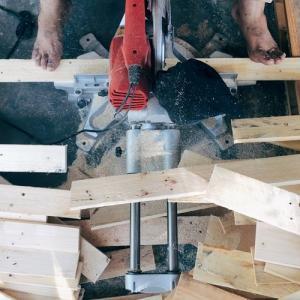As many construction companies battle the volatility of the market and economy, they simultaneously search for avenues that can enable them to reduce costs and save money. Many key players in the industry often resort to cutting benefits and hours, or even laying off personnel. All these options can have a potentially negative impact on a company’s foundational asset: Its employees.
To preserve morale and cushion the blow of volatile economic circumstances, employers should pursue other cost-saving opportunities when possible. Among these opportunities to save money, which few companies properly utilize, is the domestic manufacturing deduction, or § 199 Tax Deduction Domestic Production Activities Deduction.
“With economic pressures, construction companies need to look for savings.”
The Domestic Production Activities Deduction
The DPAD effectively repealed § 114’s extraterritorial income exclusion for taxable years beginning in 2004. This deduction specifically targets domestic manufacturing companies as a way to stimulate U.S. production activities. With an initial 3 percent benefit for the year of implementation, the DPAD has now reached a benefit amount equal to nine percent of income from qualified activities.
The law states that “domestic production activities” encompass the following:
- Mining
- Oil extraction
- Farming
- Construction
- Architecture
- Engineering
- Production of software, recordings and films – but there are caveats that allow the deduction to be claimed even if production only partially occurred in the U.S.
Specifically, these activities include:
- Manufacture, production, growth and extraction of tangible personal property, in whole or in significant part within the U.S.
- Construction of real property within the U.S.
- Performance of engineering or architectural services in the US in connection with real property construction projects in the U.S.
Construction of real property includes residential and commercial buildings, permanent structures and land improvements, oil and gas wells, platforms and pipelines, and infrastructure. While construction services may encompass substantial renovation, they do not apply to tangential services – such as trash and debris removal – regardless of their necessity for the construction process.
It is also important to note that partnerships and S corporations are not allowed to take the deduction, but their respective partners and shareholders may still benefit from the calculation.
Basic steps of the DPAD calculation
It is imperative to make sure all applicable expenses are allocated to domestic production gross receipts in order to get the full benefit of the deduction. Taxpayers wishing to take advantage of the DPAD should always consult with their tax advisor. But for an estimation on the benefit, the DPAD calculation involves:
- Pinpoint the qualified domestic production activities.
- Allocate gross receipts to qualified activities at the item level – domestic production gross receipts.
- Allocate cost of goods sold and below the line expenses to qualified activities
- Calculate the domestic production deduction – this equals nine percent of the lesser of qualified production activities income or taxable income.
Additionally, the benefit is limited to 50 percent of Form W-2 wages paid during the calendar year because wages paid to contractors on Form 1099 are not included. Hence, construction companies that pay only Form 1099 wages to personnel performing qualified activities will not be able to take the deduction.
 Businesses and individuals need to be aware of the DPAD benefit.
Businesses and individuals need to be aware of the DPAD benefit.Bottom line
While the deduction is allowed for both federal regular tax and federal alternative minimum tax, 27 states have de-coupled from the federal deduction in some way as of December 31, 2014.
Taxpayers are encouraged to consult with their CPA with regards to the DPAD due to the complexity surrounding the issue. Our team of CPAs and business advisers provides one-to-one consulting to walk you through DPAD and how the benefit could help your company and your investment.

